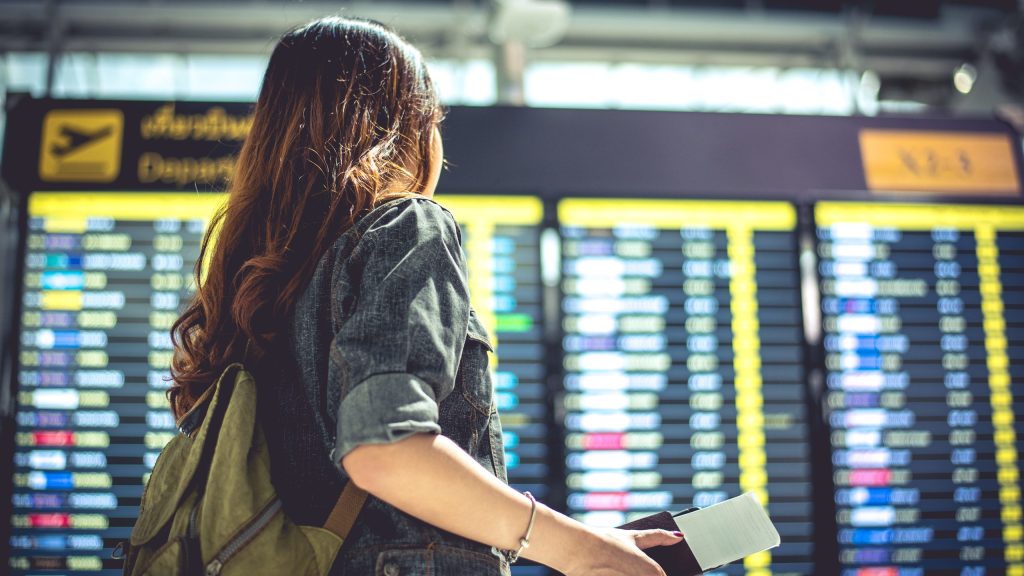A sustainable approach to the future
by Kirsty Tull
An interview with Adam Matheson, Executive General Manager, Daifuku Airport Technologies, on how airports and airlines can create a sustainable transition to touchless technology. A discussion on how Daifuku Airport Technologies', digital team are working with partners on a staged approach to technology adoption, with the passenger and ROI at the centre.

Much has been said in recent times about how we as an industry and passengers will adapt to the future of travel.
The ‘new norm’ as it is often referred to, or the industry ‘restart’ has seen the aviation ecosystem look to an unseen future and design new and bespoke methods to see people across the world once again take the skies – and most importantly, stay safe.
A surge in technology – both presentation and ideas has seen a revolution in potential adoption across all touchpoints of terminal design – curb to gate.
In past months, we have witnessed much debate on the speed of technology adoption and its role in both safeguarding and getting people back to a life in which they are most familiar.
But, within solution design, at the heart, must indeed be the customer.
The appeal of biometric and touchless technology is fast-growing, with a myriad of market alternatives becoming available. For Adam Matheson, Executive General Manager of Daifuku Airport Technologies, he sees an alternate reality for the immediate future.
What guides your process?
The passenger experience continues to guide our approach. At this time, keeping passengers safe is paramount. However, we must also consider the new mind set of travellers in a post COVID environment.
As people begin to resume traveling, we cannot underestimate that levels of anxiety and stress for passengers are likely to be high.
The immediate future of air travel will require passengers to do more from home, be mindful of new social distancing requirements, in some cases, wear masks, in addition to adapting to new regulations as part of a post COVID world.
What current research tells us is that visible signs of sanitization will provide passengers immediate comfort. Additional cleaning methods throughout the airport, combined with strategic placement of hand sanitizer, is what people are fast becoming accustomed to as part of stage one across all sectors.
What should the desired approach look like?
At a time when operational and capital budgets are strained, we have been working with our partners on models that meet their immediate and future requirements.
For many airports; an abrupt shift to touchless technology is not feasible and should not be the only solution to increase safety.
At this time, we need to deliver solutions that meet the essential needs of both airline staff and their customers – with safety and peace of mind being paramount.
We see our function to support both our customers and their passengers to comfortably scale up to touchless technology at a sustainable rate.
“We see our function to support both our customers and their passengers to comfortably scale up to touchless technology at a sustainable rate.”
How do you see the transition in technology taking place?
We have witnessed how significant global events of the past have shaped both passenger sentiment and industry response. I do not envisage an immediate migration to touchless, but I think it will challenge traditional thought processes that will see airports and airlines become more adaptive to innovation, questioning the status quo of the past through a new lens.
Touchless technology by way of mobile phone and biometrics remains a vital part of our development plans.
However, what we have witnessed, is that technology at a large scale has traditionally had slower rates of adoption within airports due to the capital cost to implement, even though the benefits are clear.
The proof points are staggering when considering self-service technology and the associated process evolution. It certainly delivers on all the hallmarks of efficiency across the passenger check-in and bag drop process.
To make touchless truly effective, airports, airlines, and importantly, their passengers need to be ready to adopt new technology. An essential part of our consultation is to assess and assist customers in ensuring both relevancy in ROI and adaptation when considering a digital transformation.
How are you working with airports to achieve this?
As a partner that provides both hardware and software, which supports multiple touchpoints throughout the customer journey, Daifuku is in a unique position to be able to take a holistic view of the passenger experience. We work with all internal stakeholders across the airport to get a 360 degree view of who the passenger is and their pain points and barriers to support a best in class journey to enable airports to thrive.
“We work with all internal stakeholders across the airport to get a 360 degree view of who the passenger is and their pain points and barriers to support a best in class journey to enable airports to thrive.”
About Adam Matheson
Adam Matheson is Executive General Manager of Daifuku Airport Technologies.
With a career spanning over two decades, his expertise has taken him across the globe, working alongside the world’s most prominent companies within the aviation industry.
His background in electrical engineering, system design and passenger intelligence see’s Adam as an active proponent and thought leader of future focussed technology. Engaged as both a spokesman and commentator on the outlook of the industry, Adam addresses the modern challenges of airports with a revolutionary view on recreating the passenger experience.
His role within Daifuku Airport Technologies is centred on the exploration and introduction of innovative global digital solutions.
Related articles
Apr 17, 2024 • 3 min read
rapidhub: Revolutionising Airport Operations with Advanced Data Integration
Apr 17, 2024 • 4 min read
rapidfids: Intuitive Flight Information Displays
Never miss an article
Subscribe to our newsletter and be the first in the know.
Join the conversation
For the latest industry articles and networking

